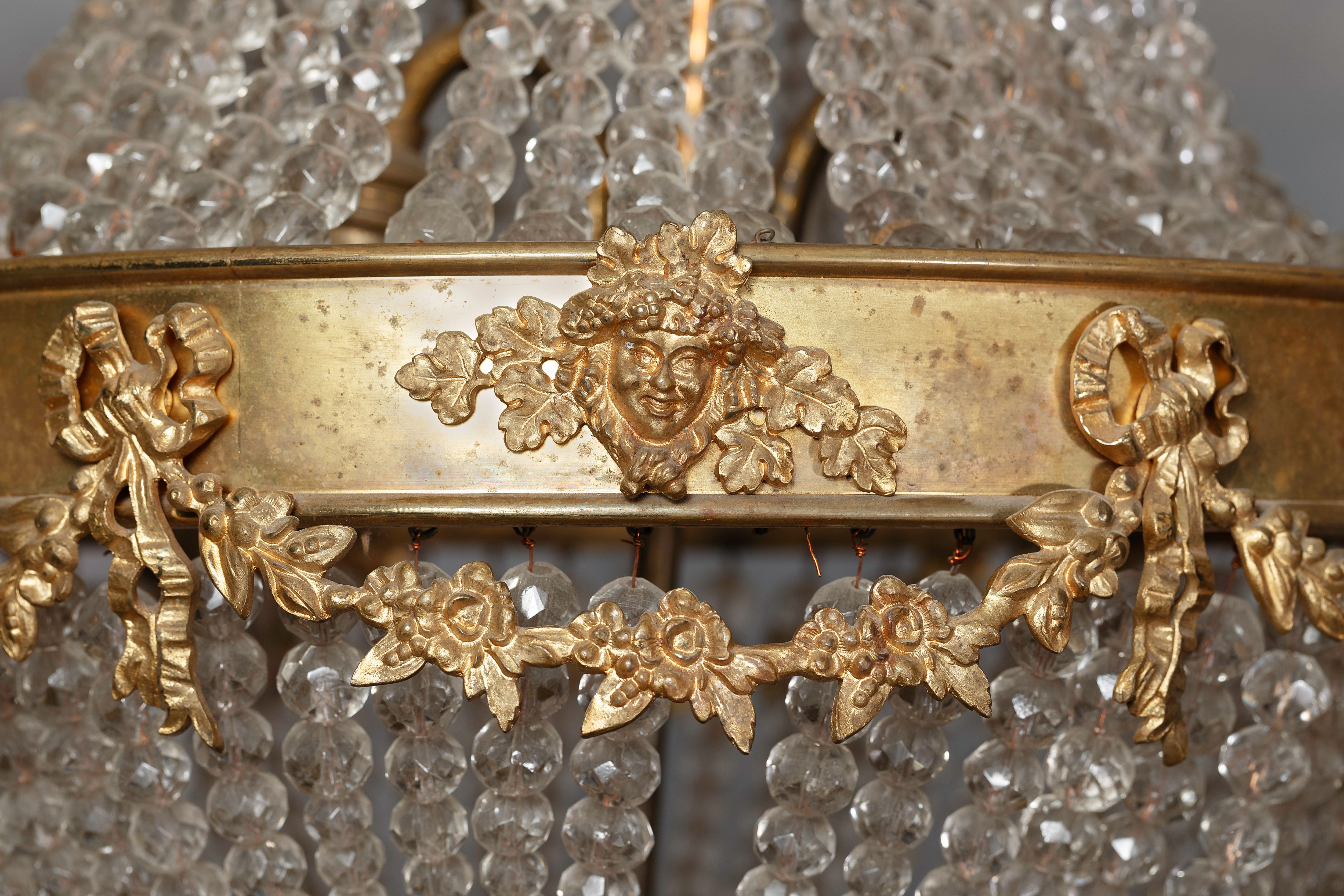The National M. K. Čiurlionis Museum of Art
Inv. No. Tt-6575
Address: V. Putvinskio str. 55, Kaunas
Time of origin: 1910–1929
Place of origin: Germany (?) / Neumann & Co, Ebersbach/Sachsen (1886–1995) (?)
Material, Technique: bronze, cooper: casting, cizeling, repoussé; gilding; crystal
Dimensions: height – 95 cm, diameter – 35 cm
The chandelier preserved in the National M. K. Čiurlionis Museum of Art may at first glance appear as an original Empire style ware of the 2nd quarter of the 19th century. The chandelier does not have arms with candlesticks. It indicates that it was made much later — in the 1910s–1920s.
The chandelier consists of a tube-shaped stem with a ring mounted at the top and bottom. Strands of round faceted beads downwardly slope from the ring at the top. Beads in each strand are strung in ascending order: the smallest at the top and the largest closest to the lower ring. The strands are coupled exceptionally densely. They completely mask the stem structure and form a sparkling tent when the chandelier is lit. Strands that hung from the lower 35 cm diameter ring towards the stem form a basket beneath the chandelier. Strands are strung on the same principle — the beads are smaller closer to the stem. The rings are adorned with bronze cast flower garlands with ribbons and cheerful faces of the ancient Greek winemaking god Dionysus (grape leaves and bunches can be seen around the faces).
Due to the abundance of crystal beads, the chandelier is very heavy. There are six sockets for light bulbs next to the stem under the beads’ tent and basket. A large round faceted crystal pendant probably decorated the underneath of the chandelier because a hole was drilled in the centre of the bronze terminal to lower it. The catalogues of chandelier manufacturers of similar period evidence that such pendants were hung beneath the chandeliers, for example, the catalogue of 1928 of the Neumann & Co. Ebersbach / Sa. chandeliers factory * [1] (Figure 5). This factory operated from 1886 to 1995 in Ebersbach — small border-town of Germany and the Czech Republic [2]. This chandelier may be a product of the workshop mentioned above.
* I thank my colleague Indrė Užuotaitė for the reference to the catalogue, and the restorers Olivier and Christina Perrin for identifying the name of the factory.
Literature and sources:- Crystallerie und Beleuchtungskorper N.C.E.S. (Neumann & Co. Ebersbacho/Saksonijos sietynų fabriko katalogas), 1928, p. 370, in: Kauno viešosios bibliotekos Meno leidinių skyrius, Už 14021.
- Mauerhoff Dietrich, „Drei Lüster-Lampen für die Oper Düsseldorf aus den Glaswerken Ebersbach und Reichenbach 1956“, in: Pressglas-Korrespondenz, PK 2013-1/32.
- Valtaitė-Gagač Alantė, XVII a.–XX a. 4 dešimtmečio sietynų paveldas Lietuvoje: Daktaro disertacija, Vilnius: Vilniaus dailės akademija, 2015, p. 233.




